Late-War Leviathans: Flames of War Looks Beyond Berlin
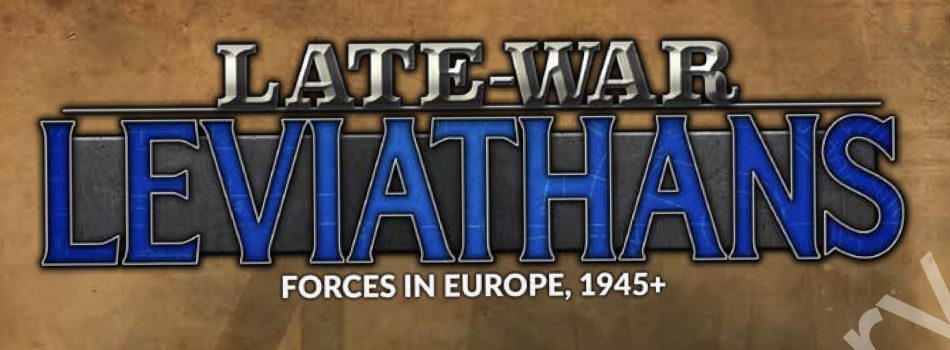
By Richard Steer
Late-War Leviathans are coming to Flames of War. Battlefront is releasing a free PDF on 2nd May that allows the models from their new 1948 alt-history game Clash of Steel to be used in the Late-War era of FOW. These new tanks, the Leviathans, are a mix of vehicles that entered service shortly after WW2, and experimental prototypes that never entered production.
The PDF is a 26-page booklet that includes one new Formation for each of the four major Late-War nations, and provides guidance on how to include them in your games.
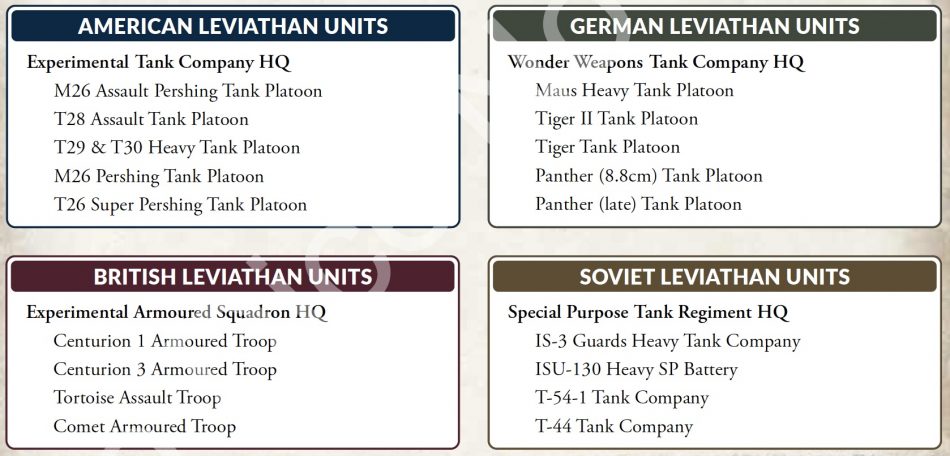
There are no Force charts in the booklet. Instead, you add these Formations to a Force from one of the other Late-War books. The “Black Box” units from the Formations can also be used as Wild Card units.
American Experimental Tank Company
The US Formation comprises an HQ of either Pershings, T28s, or T29s, and two or three tank platoons that can be mixed and matched between the different types of American Leviathans. All of the units in the formation are rated as Careful Confident Trained.
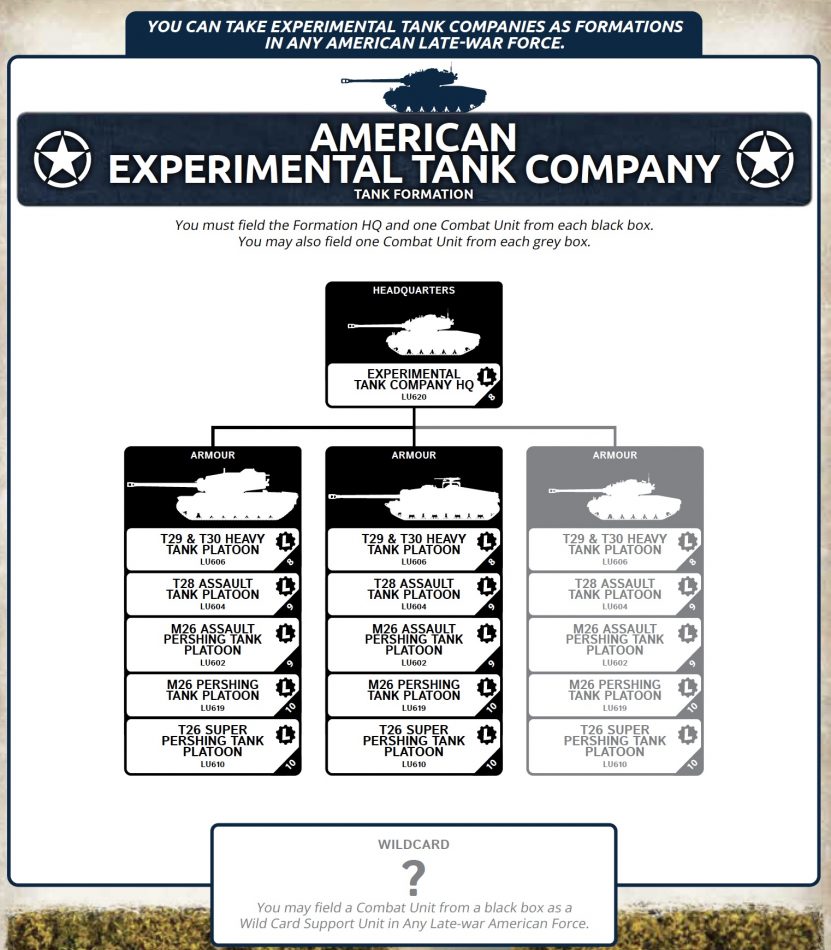
The T28 is slow, as heavily armored as a Jagdtiger, and packs a massive punch at Anti-tank 19 Firepower 2+. The T29 and T30 aren’t quite as heavily armored, being only Front 14, but are ROF 2 and Anti-tank 19, with the T30 having Firepower Auto and Brutal.
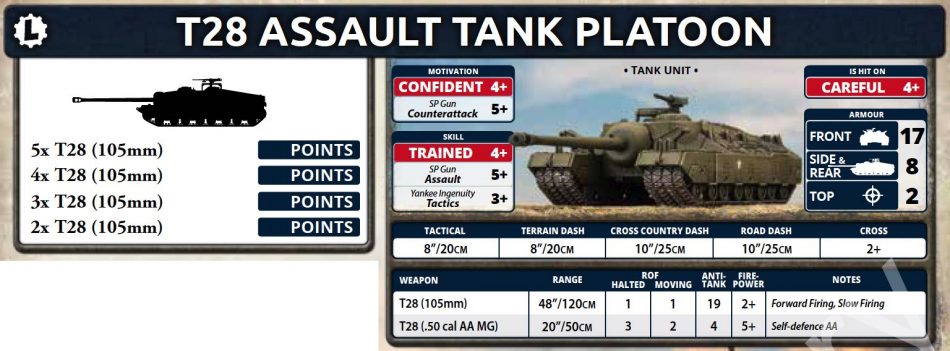
The M26 Pershing and T26 Super Pershing are the same as in Bulge: American, apart from the Super Pershing now being Slow Firing, which makes it significantly cheaper than it was in Bulge. A new Pershing variant is included: the Assault Pershing. This represents the T26E5, an experimental tank inspired by the success of the Sherman “Jumbo”, and upgrades the tank to Front 16.
German “Wonder Weapons” Tank Company
The new German Formation is called a “Wonder Weapons Tank Company”. It comprises two or three units of tanks, which can be Maus, Panther (8.8cm), Panther (Late), Tiger, or Tiger II. An optional AA tank unit rounds the formation out.
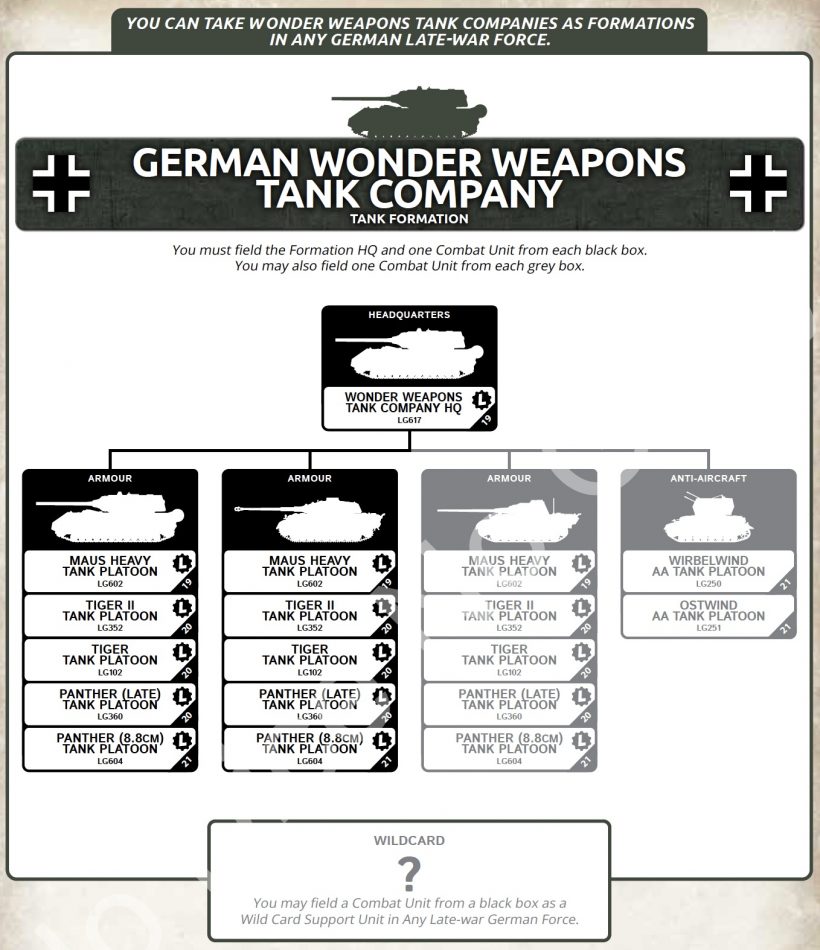
The big story here is the Maus. This monster is going to be a problem. Its armor profile of 20/13/2 means it is immune to every infantry anti-tank weapon in the game. About the only things that can kill it are Anti-tank 15+ in the side or rocket-firing aircraft – all the more reason to find a few spare points to include those AA tanks. You do pay for this insane level of protection, with each Maus making up nearly one-quarter of your force in a standard 100-pt game.
An interesting feature is the 7.5cm gun. This probably won’t see a huge amount of use, but there might be niche situations where it’s better to shoot something with the 7.5cm instead of the Slow Firing 12.8cm.
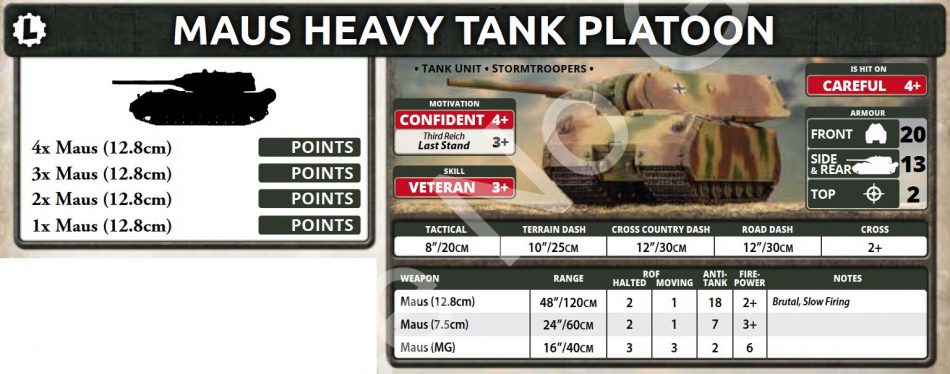
One unit with a strong claim to being a Maus-killer is the other German Leviathan: the Panther (8.8cm). This upgrades the regular Panther (Late) to Anti-tank 17, while still being mobile enough to get into the flanks of the heavier Leviathans. The tank also has the Accurate rule, which allows it to ignore the penalty for Long Range if it doesn’t move.
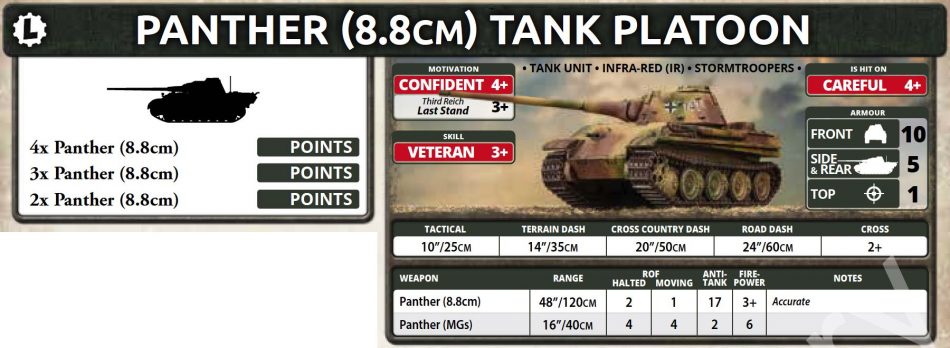
British Experimental Armoured Company
The British formation follows the same structure as a standard Late-War Armoured Squadron: an HQ, four troops of tanks, a scout troop of Chaffees, and a Crusader AA platoon. There are two compulsory troops of Centurions or Tortoises, with the optional third and fourth troops also having the option of being Comets.
The Centurion comes in two flavors: Centurion 1 and Centurion 3. The two tanks differ only in armament, with Centurion 1 having a standard late 17pdr with Anti-tank 15, and a 20mm MG. Centurion 3 is arguably the best tank in the game, and the ultimate Maus killer: a stabilized 20pdr gun with ROF 2/2 and Anti-tank 17, at less than half the price of a Maus.
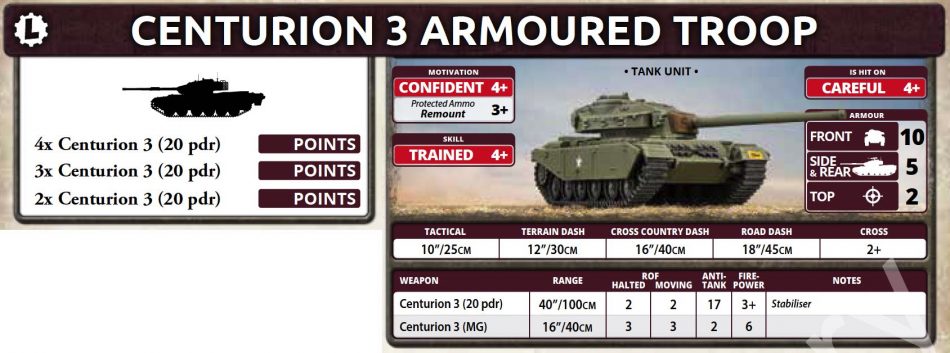
The Tortoise is described as an “Assault Troop”, but don’t let the name fool you. Its Assault 5+ Counterattack 5+ means it’s not going to be assaulting anything. What it is good at, however, is shooting things, and not dying.
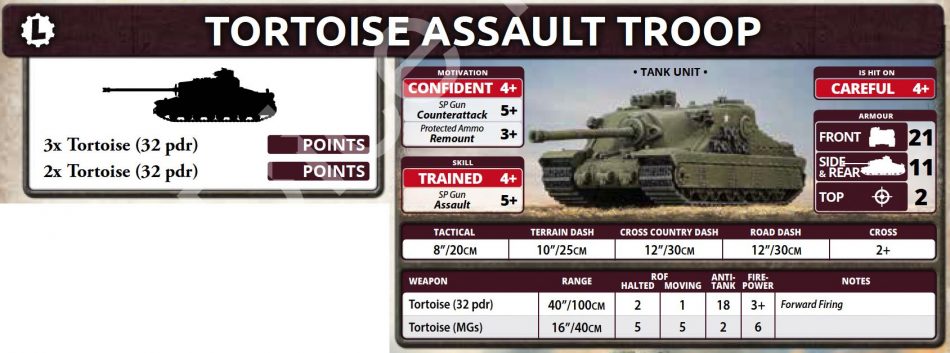
Soviet Special Purpose Tank Regiment
The Soviet Special Purpose Tank Regiment has four companies with a choice of the IS-3, T-44, T-54-1, and ISU-130, and an optional ZSU M17 AA Platoon.
The IS-3 is slightly more expensive than an IS-2 (late), gaining Front 14 and Side 9 in exchange for dropping from Veteran to Trained.
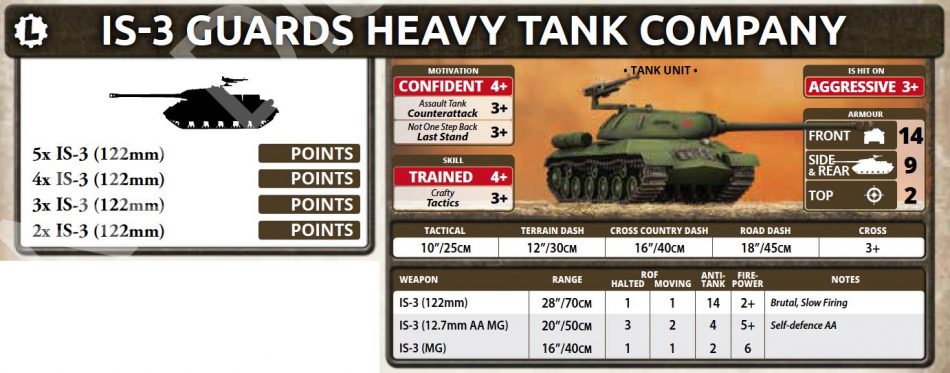
The T-44 and T-54-1 are built from the same kit. The T-44 is like a heavily armored T-34/85 with Armour 10/7/2. The T-54-1 takes this concept further by combining even more armor, a punchy Anti-tank 17 gun, and speed with a Tactical move of 12″/30cm.
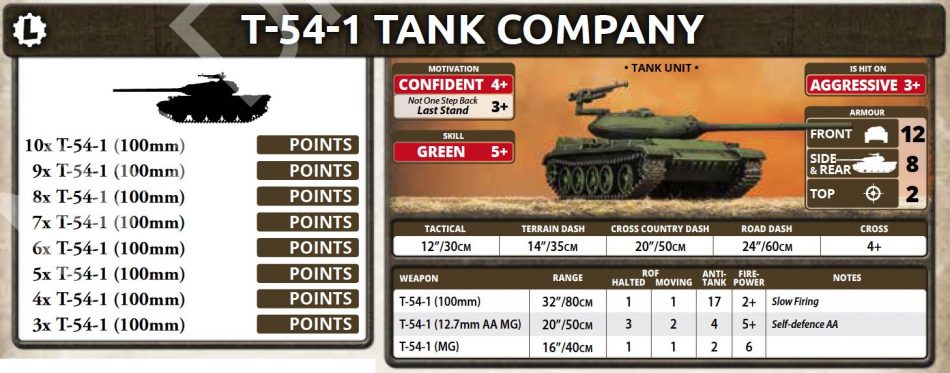
The ISU-130 sits between the ISU-122 and ISU-152 in cost. It has the same rating and armor as those vehicles, but mounts a 130mm gun with Anti-tank 18 and Firepower 2+.
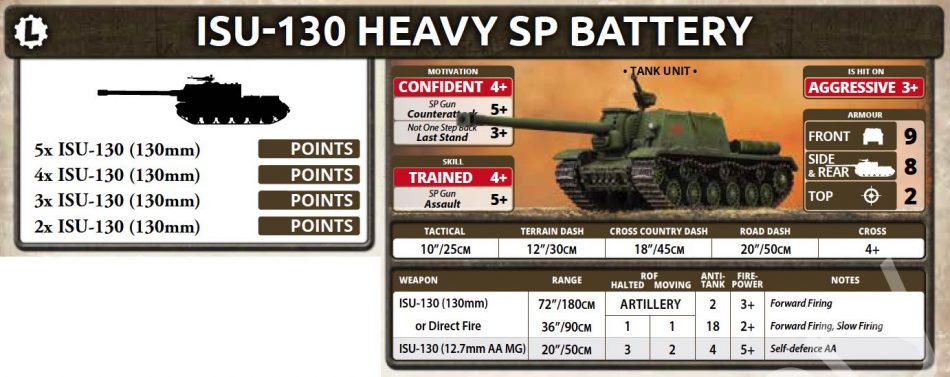
I like the Soviet Leviathans. They look like they should fit nicely into almost any Soviet force as a direct replacement for a unit of IS-2s, ISU-122s, or SU-100s, offering a significant upgrade to either armor (with the IS-3), or anti-tank performance (the ISU-130 or T-54-1). However, there isn’t anything that avoids the usual Soviet penalty of all their top-end AT units being ROF 1 and Slow Firing.
Leviathan Games
Fitting more than one Levithan unit into a standard 100-pt game of Flames of War will be challenging. To resolve this, the booklet provides an alternative option called “Big Games with Leviathans.” These games have a much higher point limit, but no more than 25% of your points can be spent on non-Leviathan units.
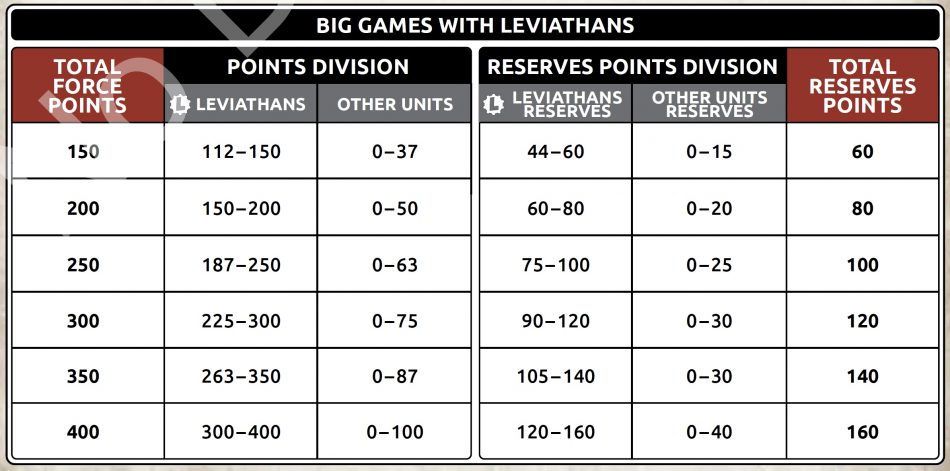
In addition to the new Leviathan units from the booklet, there is a large list of units from other books that count as Leviathans when playing Big Games.
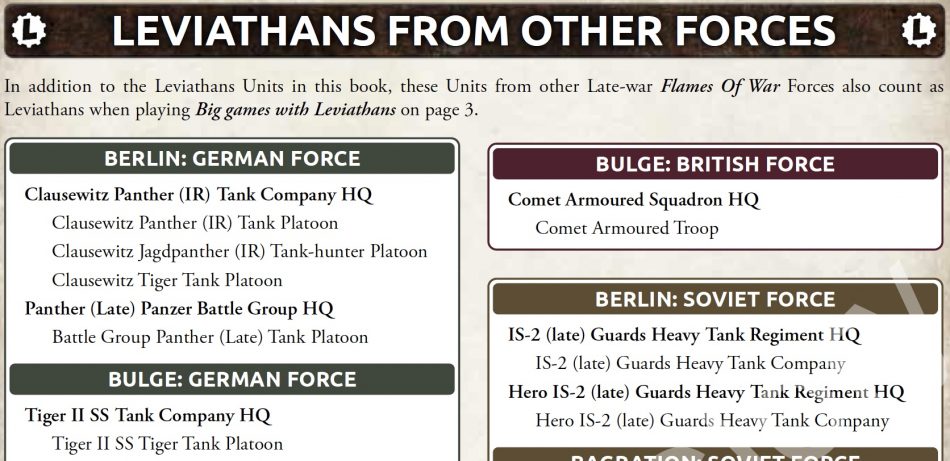
Will It Break The Game?
I’ll admit that I was worried about the impact of Leviathans on the game. However, most of what has been included is not that different to the Tiger II and Jagdtiger from Bulge: German. In my experience, neither of those vehicles has broken the game, as their cost, side armor, and the missions matrix combine to ensure that players have ways of defeating them. The same should be the case with the Leviathans, with typical Late-War tanks being able to flank and kill most of them from the side.
The exception here is the Maus, which has armor that is high enough to be able to ignore the vast majority of anti-tank weapons in the game. The test of that will be on the table: is the Maus priced at the right level such that the combinations of missions, the other Leviathans, and aircraft are enough to prevent them from dominating the game?
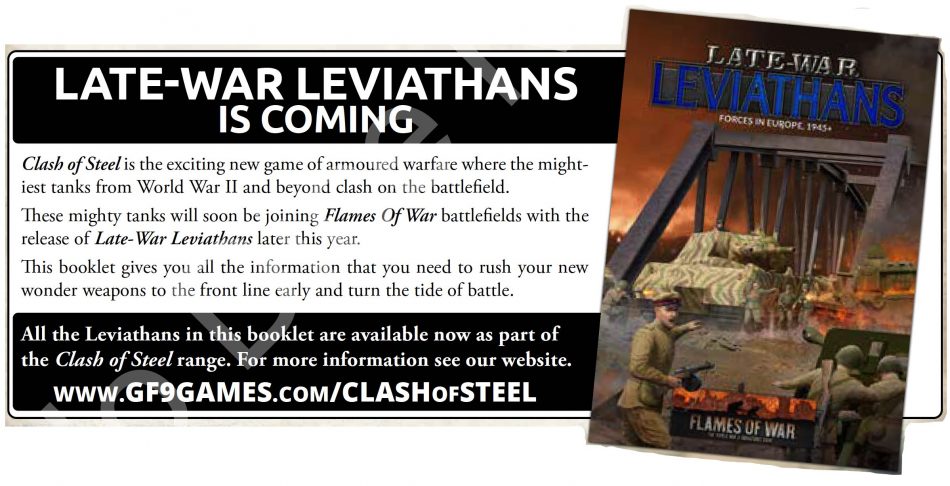

Hope resin and metal otherwise not for me
At a guess it will be the same as WOT all plastic kits , but none are pre-built .
As an Engineer, it’s hard to believe the Panther turret could support the 8.8 cm gun!